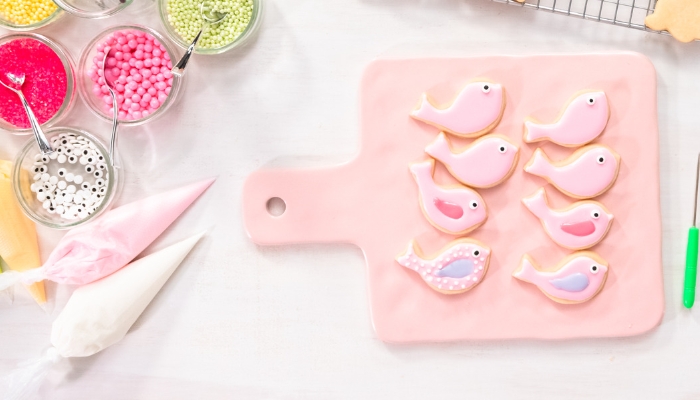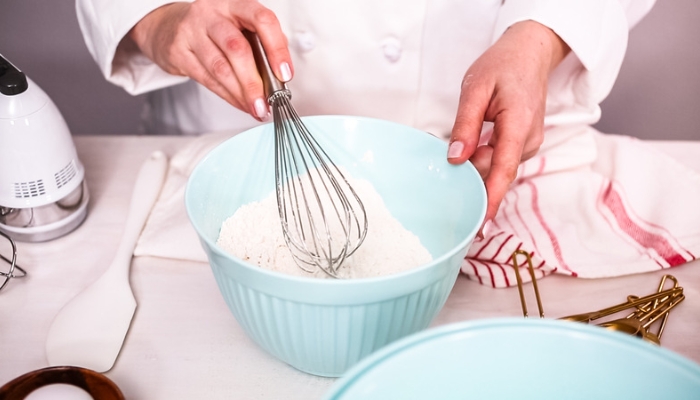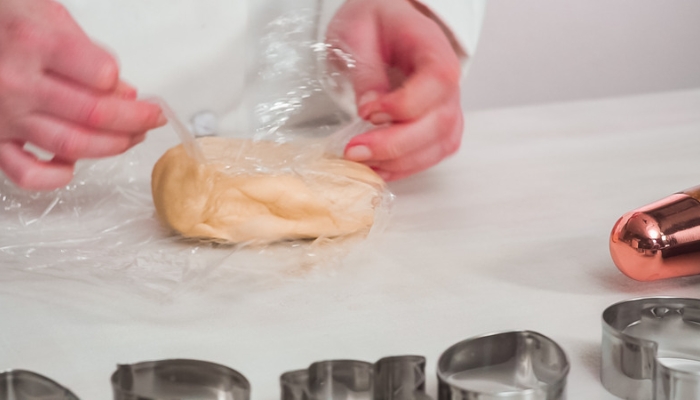There's something undeniably magical about a perfectly baked sugar cookie – the delicate texture, the enticing aroma, and the delightfully sweet taste. Whether you're an aspiring baker or a seasoned pro, achieving sugar cookie perfection is an art that requires a blend of technique, patience, and a sprinkle of creativity. So, grab your apron, preheat your oven, and let's embark on this sugar-filled journey together.
How to Make the Perfect Sugar Cookie

Making the ideal sugar cookie is a science, and there are several different steps you can take to make sure that they come out perfectly every single time!
Opt for Room Temperature Eggs
You've probably heard of having to pay attention to the temperature of your butter, but did you know that the temperature of your eggs can also make a dramatic difference in the quality of your sugar cookies?
- Better Incorporation: Room-temperature eggs blend more easily with other ingredients, such as sugar and butter. When the eggs are cold, they can cause the butter to solidify and create clumps in your batter. Room-temperature eggs result in a smoother and more even texture.
- Improved Volume: When you beat room temperature eggs, they create more air bubbles in your battle, which increases the volume. This helps cookies to rise properly and have a lighter, more tender texture.
- Even Baking: Cold eggs can cool down your batter, which can lead to uneven baking. Room-temperature eggs help maintain a consistent temperature in the batter itself, allowing the cookies to avoid overbaking or underbaking.
If you forgot to pull out your eggs ahead of baking, you can place them in a bowl of lukewarm water for about 10-15 minutes before using them in your recipe.
Refrain from Overmixing
One mistake a lot of home bakers make is continuing to mix the dough after all of the ingredients are added and combined. Resist this urge! Mixing too long after adding the flour will create a dense, tough cookie. You want to just mix until the wet and dry ingredients are combined, and then turn off the mixer.
Whisk the Flour
Many sugar cookie recipes tell you to "sift the dry ingredients," but it's easier to whisk them! Whisking will combine the dry ingredients while also giving air and fluffiness to the flour.

Use Room Temperature Butter
Dang, you're in the middle of making dough for your cookies when you realize that you forgot to set out the butter earlier in the day. But that's not a big deal, right? You can just heat it in the microwave and melt it down, right? Wrong! If there's any step you shouldn't skimp on when it comes to cookies, it's the butter.
- Proper Incorporation: Room temperature butter is soft and pliable, making it easier to mix into the dough. It blends more smoothly with the sugar, resulting in a uniform mixture and better distribution of fats throughout the dough.
- Better Texture: Cold butter takes longer to incorporate into your batter, resulting in a denser texture and overmixing. Mixing in room temperature butter with your sugar creates a light and fluffy texture in the dough.
- Improved Spread: Room-temperature butter melts more quickly in the oven, allowing the dough to spread evenly and create the perfect cookie circle. When you use cold butter, it takes longer to melt, which can result in cookies that are thicker and denser than you intended.
- Enhanced Flavor: It's no surprise that a better-incorporated butter makes better-tasting cookies (we're in the Julia Child and Paula Dean camp of everything is better with butter). Room-temperature butter releases its flavors more easily than cold butter and melds more easily with other ingredients to create a balanced flavor.
There's no good way to soften butter faster if you forget to pull it out of the refrigerator prior to baking. You can, however, cube the butter to increase the surface area so it will soften more quickly or grate the butter and spread it in a single layer on a plate or cutting board.
Bake on Parchment Paper
Not only does baking your sugar cookies on parchment paper mean easy clean-up for you, but it also promotes even heat distribution during baking and provides a non-stick surface for removing the cookies.
Remove Cookies from the Oven Before They're Golden
Don't bake your sugar cookies too long! Your cookies are ready to come out of the oven when there's barely any color to them (about 7 to 8 minutes). If you take cookies out of the oven before the cookies begin to turn golden, you can save your cookies from overly crispy or burnt edges.

Chill the Dough
Once you mix the dough, shape it into a disc and wrap it in plastic wrap. Then you'll want to place it in your fridge until completely firm, preferably overnight (but at least an hour). Chilled dough is ideal when making sugar cookies for several reasons:
- Reduced Spreading: Chilling the dough helps to solidify the fat in the dough, which slows down its melting during baking. As a result, chilled dough spreads less during baking, helping the cookies retain their shape. This can be a crucial step if you make sugar cookie cut-outs where the shape is important to the bake!
- Enhanced Texture: As the dough chills, the flower absorbs some of the liquid, allowing the cookies to bake up with a more tender and chewy texture.
- Improved Flavor: Resting the dough in the refrigerator allows the flavors to meld and develop, resulting in more flavorful cookies.
- Easier Handling: Chilled dough is firmer and easier to handle, especially when making cut-out cookies. It's less sticky and more manageable, making it easier to roll out and cut shapes without it sticking to the rolling pin or cookie cutters!
Chill the Dough AGAIN Before Baking
So, you chilled your dough before rolling it out, but you should do it after you form your cookies as well! Refrigerating the unbaked cookies until the dough is once again firm will help the cookies retain their shape when baking. This time when you chill the dough, you only need to leave them in the fridge for about 30 minutes to an hour.
Convection Bake or Regular Bake?

To convection bake or regular bake, that is the question – and, honestly, the answer is you can do both! When you bake your cookies with convection, it yields a rounder, taller cookie with a crisp exterior. Even heat created by the air circulating during convection creates the perfect combination of crunchy and gooey – think a crisp outside with a chewy center. If you prefer a softer and chewier cookie, then it's recommended to use your oven's regular bake.
With these expert tips and tricks, you're ready to whip up the perfect batch of delicious sugar cookies! And if your oven could use an upgrade or you need more space in your fridge, we've got your back on that...so long as you share the cookies. Stop by or contact us today!